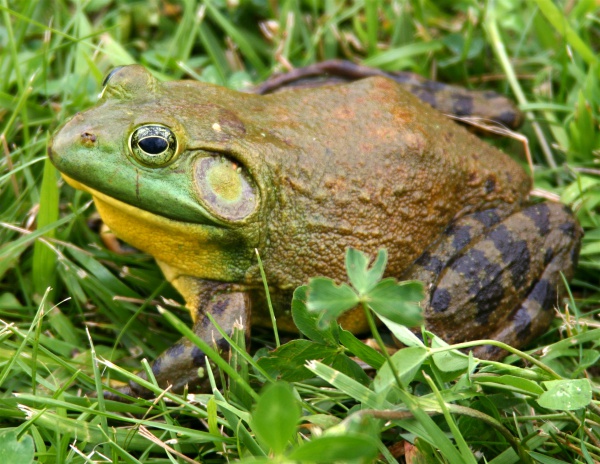Facts About American bullfrog
The American bullfrog, known scientifically as Lithobates catesbeianus or Rana catesbeiana, is a large amphibian indigenous to North America. Distinguished by its olive-green back adorned with brownish markings, male bullfrogs are particularly notable for their yellow throats. These frogs are typically found in large bodies of water but are also common near smaller urban water sources. Their loud calls during the breeding season, reminiscent of a bull's roar, are quite distinctive.
Bullfrogs have spread far beyond their native range and now inhabit parts of North, Central, and South America, as well as Europe and Asia, where they have been introduced. In some regions, they are considered invasive. They are harvested for their legs, regarded as a delicacy in many countries, and are often used in biology classes for dissection or kept as pets.
These frogs exhibit sexual dimorphism, meaning males and females differ in appearance; males are smaller and have yellow throats. During the breeding season, males defend territories and use a variety of calls to attract females. The breeding process involves male competition and female selection based on specific cues. Male bullfrogs form choruses, using their calls to attract females.
Bullfrogs undergo a fascinating transformation from tadpoles to adults, a process that can take anywhere from a few months to several years. They are voracious predators, consuming a wide range of prey including insects, fish, and even small mammals. Their hunting strategy involves a powerful lunge and the use of their strong jaws to catch and consume their prey.
In the ecosystem, bullfrogs provide prey for various predators. Humans also hunt them for food, particularly their legs, which are often cooked similarly to chicken drumsticks. However, commercial farming of bullfrogs faces challenges such as disease, predation, and the risk of escape.
The American bullfrog is a popular specimen for dissection in schools and holds the title of state amphibian in Missouri, Ohio, and Oklahoma. In 2017, the nuclear genome of the North American bullfrog was published, offering valuable insights for future research on this species.

 Mexico
Mexico